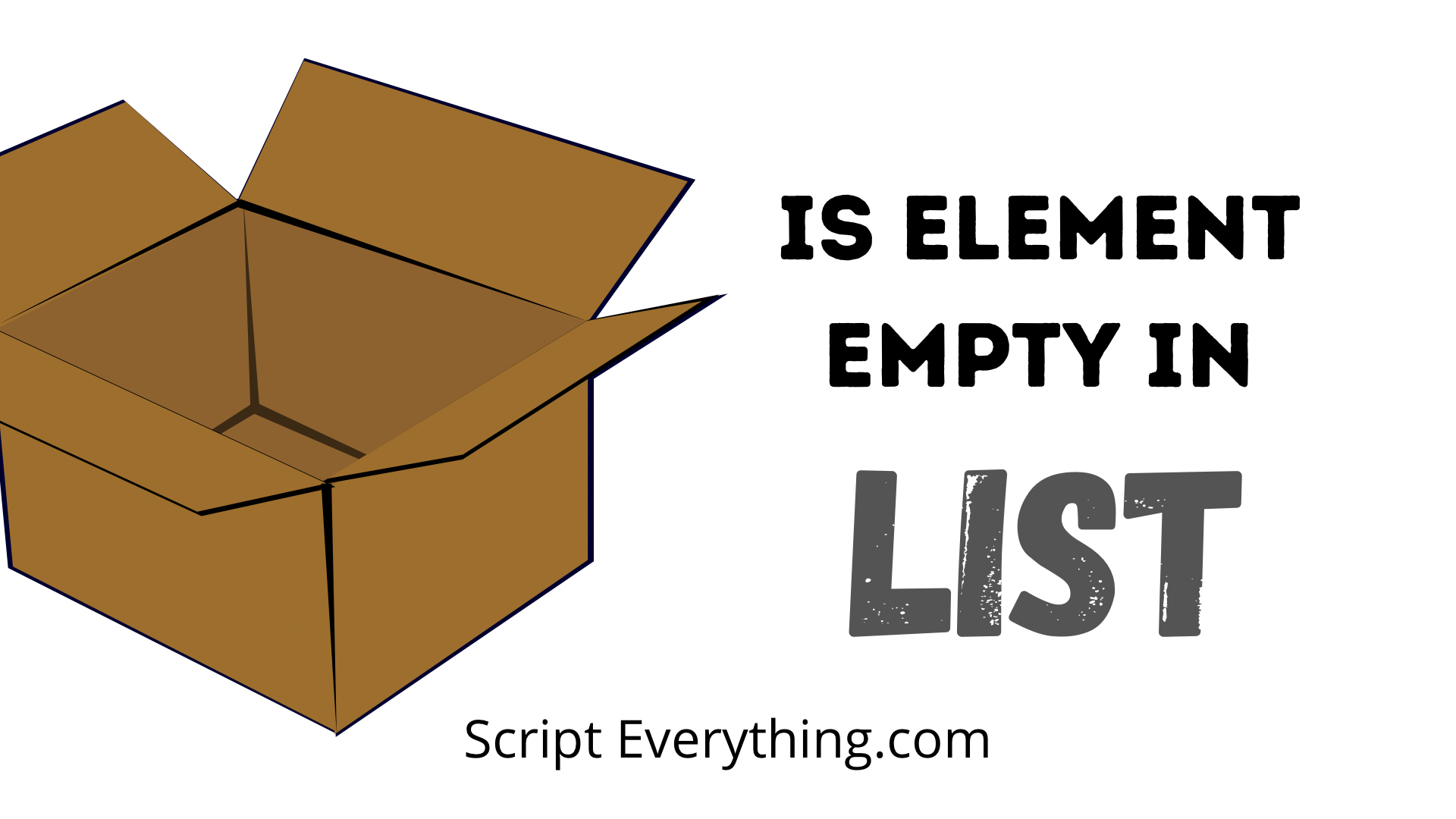How do you know if an element in Python is empty? First, you need to define what is meant by the term
empty
. Does it mean
None
or an
empty string
""
or something else? For the examples in this article, I’ll assume that empty means an element is defined as
None
, however, if you’ve defined empty as something else then you can simply substitute my
None
references to your definition of an empty element.
To check if an element in a list is empty either perform a direct check by referencing the element using index notation, such as
if my_list[0] == None
or use a
list comprehension
to loop through the entire list and perform the necessary check.
Here is an example where you can check if a specific element in your list is empty:
>>> e = [None, 2, 3]
>>> if e[0] == None:
... print("Empty item")
...
Empty item
In the above example, the first item in the list is an empty element. Using an if statement I directly reference the first element in the list by using
e[0]
and compare this directly to what I’m defining as an empty element
None
. If this is true then I’m printing the output
"Empty item"
to the REPL.
This is quite a simple way of being able to check if an item is empty, but what if you wanted to know if there was just one empty element in your list?
Check If List Contains An Empty Element
If your use case is to determine whether a list contains even
one empty element
and to return
True
or
False
based on this condition you can easily do this using one line of code in Python by way of a
list comprehension
.
Here is an example which I’ll explain further underneath:
>>> e = [1, 2, None, 4]
>>> bool([elem for elem in e if elem == None])
True
>>> f = [1, 2, 3, 4]
>>> bool([elem for elem in f if elem == None])
False
As demonstrated in the above examples the first list contained an empty element and therefore the result was
True
, however, the second list did not contain any empty elements and correctly returned
False
.
The way this code worked was by using a list comprehension with an if statement checking each of the elements in the original list. Through each iteration of the for loop the if statement ensuing checked if there was an empty element, if there was this element was added to the next list being created by the list comprehension.
Once the list comprehension operation was complete the
bool()
built-in function simply converted the list into a boolean. If the
list was empty
the boolean returned would be
False
(which it did in the second case), but if there was at least one item in the list then the boolean would return
True
(which it did in the first case).
A list comprehension is a great way of being able to perform a task using only one line of Python code.
Summary
To check if a list element is empty use either a direct index reference to the element by using the syntax
list_name[index_number]
. If you need to check if a list contains an empty element use the list comprehension code
bool([elem for elem in my_list if elem == None])
.
Next, you might want to explore how to add an empty element to a list .

